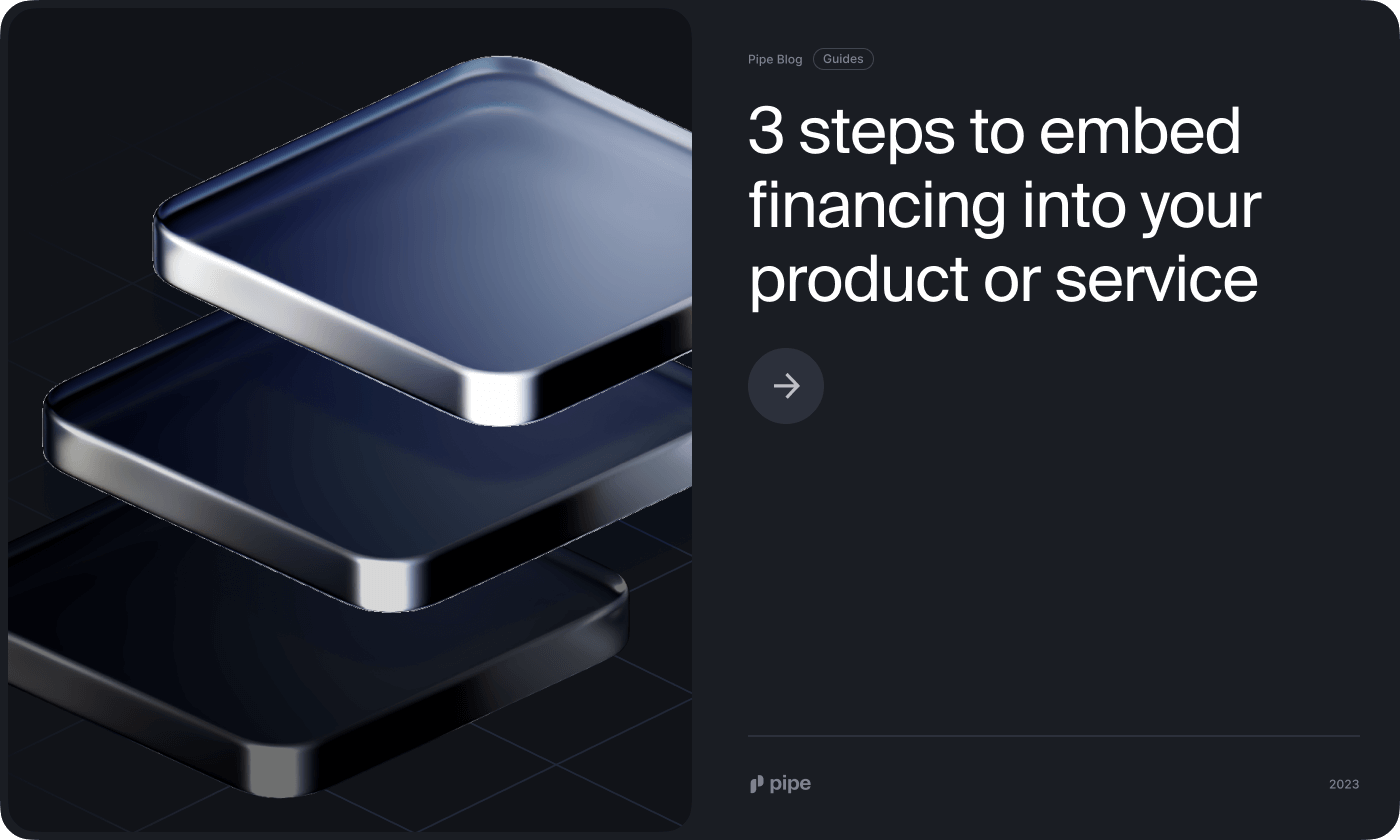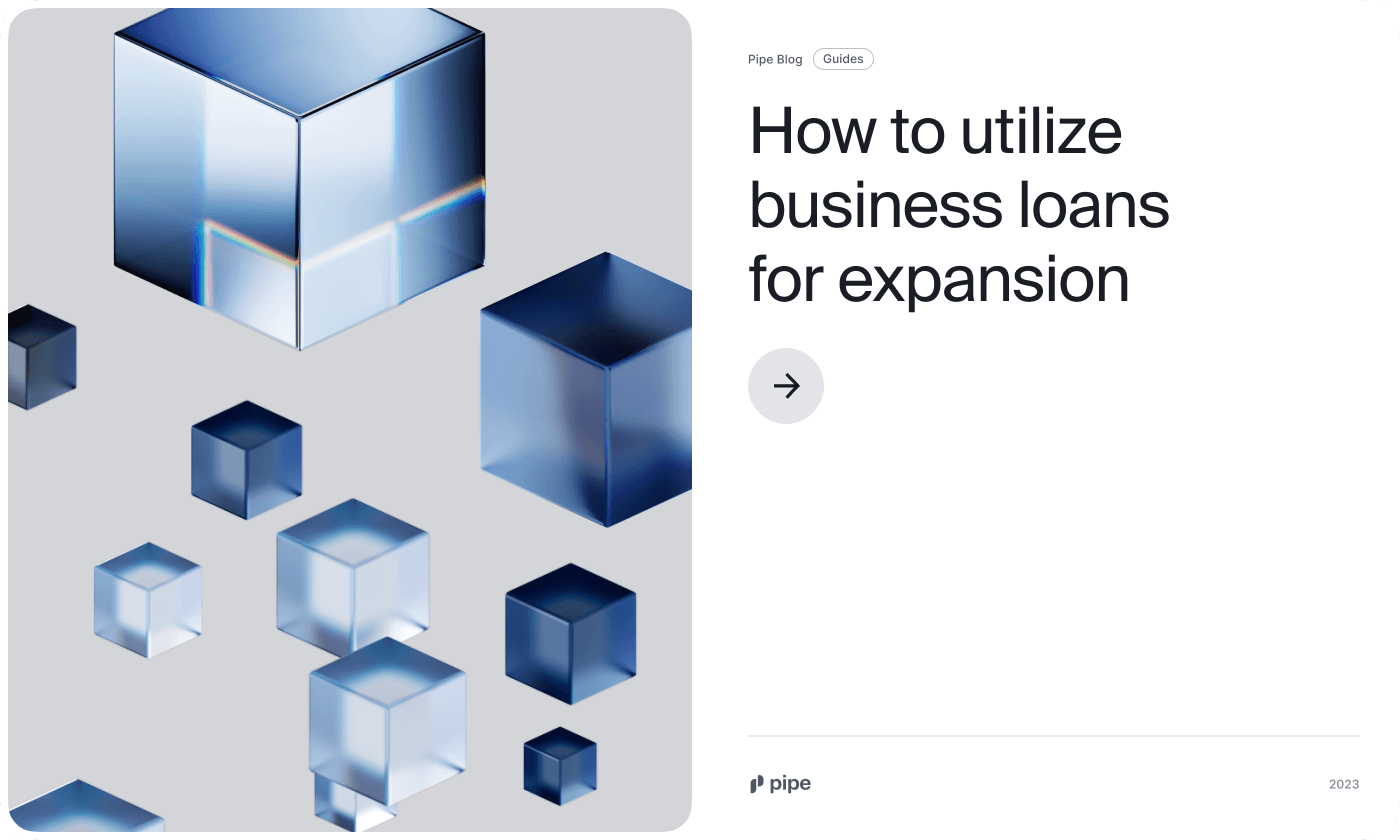Should vertical software companies develop in-house embedded financing or partner?
Here are the pros and cons of building a embedded capital product in-house versus partnering with Fintech.
By Luke Voiles 6 Min Read — August 4, 2023
What's The TL;DR
For many of us, convenience is no longer a luxury but an expectation. This extends beyond our personal lives and directly impacts how businesses operate. As a result, embedded financing has experienced significant growth, offering small to mid-size business owners quick access to capital inside of the software they already use for day-to-day operations.
While independent software vendors (ISVs) and Payfacs have a unique opportunity in this space to offer their customers more access to financial products, building a capital product presents formidable challenges. Let's take a closer look at those challenges and the options for overcoming them. For a quick deep dive, click here to jump to a side-by-side comparison of the pros and cons of building in-house or partnering.
The Rise of Vertical Payments and Industry-Specific Software
The rise of vertical payments is an ongoing trend, offering comprehensive software tools that help businesses in specific industry with several tasks at once. Vertical platforms like Toast have emerged as leading examples, providing restaurateurs with a one-stop solution. By integrating financial services seamlessly into their platform, software companies can create even more benefit for themselves and their customers.
One advantage is the potential to significantly increase Gross Payment Volume (GPV). With embedded financing, software companies can provide their merchants with easy access to capital, allowing them to make larger purchases or invest in essential upgrades without straining their cash flow.
This increased purchasing power not only leads to higher transaction volumes but also cultivates stronger relationships with merchants, ultimately driving up GPV and bolstering the financial health of the ISV itself.
By offering embedded financing, software companies also position themselves as indispensable partners, seamlessly integrated into their customers' operations. This leads to increased LTV and customers more likely to stick with a platform that not only meets their payment needs but also helps them manage their finances effectively.
The Embedded Capital Solution
Find out how Pipe's platform can be yours
Navigating the Challenges of Embedded Finance
Building a financing business is harder than it may look, and several crucial requirements must be met. Obviously, you need access to the capital, but getting that capital and making the economics work requires that you clear at least four major hurdles.
You need a frictionless way to acquire quality customers at a low cost, and access to consistent, standardized data sets for risk underwriting.
These first two are the easiest for ISVs, as they already have a customer base and extensive data about them. The other two hurdles will likely take an ISV far outside of its wheelhouse and can lead to a quick death for an in-house embedded offering.
Once you have the customers and the data, you need reliable risk models with a proven track record.
On top of that, you’ll need efficient, automated end-to-end operations that allow you to run your program with thin margins (ideally keeping variable costs below ~2% of revenue). That can be very tough to achieve when financing isn’t your core focus.
If any of these four components is off the mark, you’ll either be unable to access the capital you need to offer funding, or you’ll launch a short-lived offering that takes you away from your core business and can’t keep itself afloat.
Fortunately, there’s an alternative that allows you to leverage your customer, data, and deep industry knowledge, without taking on unrealistic financial challenges or untenable risk.
Leveraging Fintech Partnerships
Given the hurdles we’ve just mentioned, it’s easy to see how challenging it is to add small business financing to your platform.
Fortunately, you don’t have to do it alone. By partnering with fintech firms that specialize in connecting businesses to capital through technology, vertical ISVs can make the most of their deep industry knowledge and data to serve their customers even better.
An embedded capital partner can automate the process, harnessing real-time data with as little as a few months of history, in contrast to the two years of financials typically needed by banks.
The right partner allows for operational efficiency, technology-driven underwriting, compliance and regulatory solutions, for a turnkey embedded financing product.
In-house vs. Partnering with Pipe
Here’s a simple, side-by-side comparison of building your own capital product in-house vs partnering with a fintech capital expert like Pipe.
Criteria | In-House Development | Partnering with Pipe |
|---|---|---|
Initial Investment | Full control of development, but high upfront costs and resource allocation. | Launch the SDK capital offering in days, or fully customize with Pipe's API. |
Expertise and Technology | Requires significant technical expertise and development time. | Leverage advanced technology and expertise without taking on the risk. |
Time to Market | Typically slower due to development and testing phases. | Deploy a Pipe hosted offering or Embedded UI in days. |
Risk Management | Typically higher risk due to lack of specialized expertise. | Benefit from Pipe's experience and established risk management protocols. |
Operational Integration | Integration with existing systems requires significant internal resources and coordination. | Easier and faster integration with less internal effort. |
Customer Experience | Challenging without significant UI expertise and experience. | Proven user-friendly interfaces that convert and a seamless customer experience. |
Ongoing Maintenance and Support | Continuous resource allocation is required for maintenance. | Maintenance and updates are typically managed by Pipe. |
Scalability | Requires continuous investment in technology and resources for scaling. | Easily scalable to hundreds of thousands of merchants. |
Financial Liability | Full financial liability and potential for higher financial risk. | Reduced financial liability as Pipe assumes a portion of the risk. |
Marketing Know How | Requires substantial resources and expertise for an effective marketing campaign. | Leverage Pipe's experienced marketing team, matched to your brand identity and strategy |
Sales Expertise | Building and training a skilled sales team is resource-intensive. | Benefit from Pipe’s experienced sales team, proficient in selling to SMBs. |
Conclusion
The rise of embedded finance presents a compelling opportunity for software companies to expand their offerings and empower small businesses.
However, building a sustainable financing business takes careful consideration, expertise, and strategic partnerships.
By embracing collaboration with fintech firms, software companies can leverage their deep industry knowledge while providing embedded financial services as a seamless off-the-shelf product.
This collaboration between vertical software solutions and fintech unlocks unprecedented value, delivering enhanced financial access to small businesses.
Disclaimer: Pipe and its affiliates don't provide financial, tax, legal, or accounting advice. What you're reading has been prepared for knowledge-sharing and informational purposes only. Please consult your financial and legal advisors to determine what transactions and decisions are right for you and your business.
Share this article
Luke Voiles Luke Voiles is CEO of Pipe, a fintech nerd, and a father of four. Before joining Pipe, he was the GM of Square Banking at Block and led the team that built out Intuit’s small business lending unit, QuickBooks Capital. Connect with Luke on LinkedIn to keep the conversation going.





